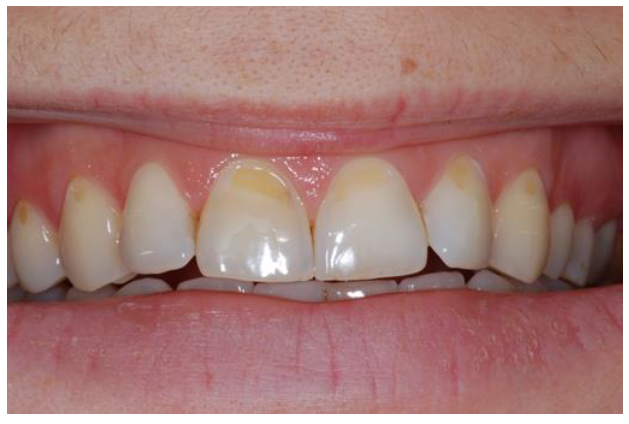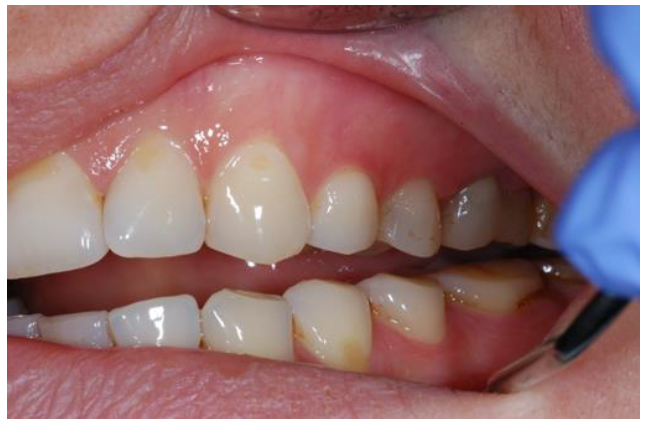Sports Drinks evaluation by a sports - oriented Dentist
Article Information
Witold Bojar1*, Sylwia Flis2, Pawel Rogus3
1Faculty of Dental Medicine, Medical University of Warsaw, Emilli Plater 21, 00-688 Warsaw, Poland
2Pharmacology Department, National Medicines Institute, Chelmska 30/34, 00-725 Warsaw, Poland
3Klinika Stomatologiczna Ortognatyka, Aleja Krakowska 54, 05-090 Raszyn, Poland
*Corresponding Author: Witold Bojar, Faculty of Dental Medicine, Medical University of Warsaw, Emilii Plater 21, 00-688 Warsaw, Poland
Received: 07 May 2021; Accepted 18 May 2021; Published: 02 June 2021
Citation: Witold Bojar, Sylwia Flis, Paweł Roguś. Sports Drinks evaluation by a sports- oriented Dentist. Dental Research and Oral Health 4 (2021): 034-038.
View / Download Pdf Share at FacebookAbstract
Introduction: Modern amateur sportsmen often spend several hours daily on exercise. Especially those doing cycling, long-distance running or triathlon. Sports drinks are widely used by them on every training routine. Some studies have reported a close relationship between sports drinks and dental erosion. Are there any brands or formulations which can be advantageous and recommended by dental professionals?
Methods: 5 “isotonic” sports drinks, an energy drink, orange juice, vitamin water and 2 extempore drinks were chosen for the study. Their pH and osmolality were analyzed.
Results: The osmolality of the evaluated drinks varied over a relatively broad range (60-648 mmol/kg). In general, it was increasing with total carbohydrate content. The pH value was in the range of 2.76 to 3.90; what may have an impact on dental erosion.
Conclusions: It is always advisable for a sport person to choose a drink with a desired osmolality. This is not an easy issue, because the “isotonic” sports drinks and one of the ex tempore (home-made) drink did not have the optimal osmolality in our opinion. The value of big concern for every dental professional is however and undoubtedly the acidity of all the evaluated beverages. Taking into consideration both parameters, there was no drink in the tested group to be recommended by a sports-oriented dentist.
Keywords
Sports drinks, Osmolality, Dental erosion, Diet, Diagnosis, Oral hygiene education
Sports drinks articles; Osmolality articles; Dental erosion articles; Diet articles; Diagnosis articles; Oral hygiene education articles
Article Details
1. Introduction
Sports drinks are formulated to prevent dehydration and to supply carbohydrates. Dehydration is the result of the loss of water and electrolytes in our sweat. The proper combinations of carbohydrates should augment available energy.Consumption of sports drinks prior and during prolonged training appears to improve performance [1,2]. That is why not only professional sportspeople but also competitive amateurs use these beverages on every training routine which can last for several hours, every day. Cycling, long-distance running, and triathlon seem to be activities with particularly long-lasting exercise and therefore high consumption of sports drinks. We were inspired to conduct this research after a dental patient who was professional cyclist suffered from significant dental erosion (Figures 1 and 2). The patient's self-awareness helped us to establish the correct diagnosis. Formulated sports drink was used in this study. Many athletes prepare their mixtures of "isotonic" using a selection of basic ingredients like water, sugar, fructose, glucose, maltodextrin, honey and fruit juices. Most of them to be palatable have a sour taste from citrus fruits addition. Their pH probably does not differ much from the commercially available [3]. The most popular commercially available drinks are low carbohydrate concentrations drinks (<10%) and marketed for general consumption before and during training [1]. Gels often replace drinks with high carbohydrate concentrations >10% and are intended for use after exercise or in case of extended practice. The composition of favorite sports drinks has changed over the time, so it is hard to compare their effectiveness even in competitive team sports [1]. For example, the formulation of Gatorade® in the 1970s and 1980s is different than beverage which is currently commercially available [1]. Nowadays, the production and sale of sports drinks is a big, rapidly growing and competitive industry. When purchasing samples for this study, there were four brands available just in the closest grocery store. The formulation of different drinks is quite similar as declared on labels. Stating the difference in essential properties like osmolality and pH was the aim of this research.
2. Materials and Methods
The chosen drinks for the study were:
- 5 "isotonic" sports drinks (i4 Sports Isotonic Sports Drink, Powerade Xion4, 4Move Isotonic Drink, Oshee Isotonic Sports Drink, Oshee Zero) all in blue color and multifruit flavor.
- 2 energy drinks (Red Bull Energy Drink, Red Bull Sugar-Free)
- orange juice 100% (Vitellia, Tesco) and orange juice mixed with moderately mineralized water 1:1
- Oshee Vitamin Water
- extempore sports drink made of 4.0028g of glucose in 100g somewhat mineralized water with the addition of 5ml lemon juice
Mettler Toledo Seven Easy pH meter (Mettler-Toledo, Warsaw, Poland) was used to measure the pH of the liquids. Osmolality was measured by freezing point depression with the osmometer Osmometr 800cl (Trident Med, Warsaw, Poland). Both analyzers were calibrated according to the manufacturer's instructions. All measurements were done at least thrice, in different periods of time. One Way Analysis and Bonferroni t-test was used for statistical analysis.
3. Results
The osmolality, SD and the value of osmolality declared by the manufacturer are presented in Table 1. The pH, SD and SEM of different drinks in Table 2.
Table 1: The Osmolality of chosen beverages. SD - standard deviation and the value of osmolality declared by the manufacturer.
Table 2: pH of chosen beverages. SD - standard deviation, SEM - standard error of the mean
4. Discussion
The idea behind using the term "isotonic" in case of sports drinks is to communicate that a beverage contains the same quantity of active osmotic substances per unit of mass as blood, whose osmolality is generally around 280-290 mOsmol/kg. According to different regulations, a sports drink can be declared as isotonic when its osmolality is in the range of 250-340 mOsmol/kg [3]. This variance causes problems. First, osmolality above 290 mOsmol/kg already promotes initial water secretion into the intestinal lumen [4]. Second and contrary to widespread belief even the drinks with an osmolality of 280-290 mOsmol/kg are not the ones that are absorbed the fastest. Intestinal water absorption rate is suggested to be higher with hypotonic [5]. The optimal osmolality for a sports drink has therefore been defined to in the slightly hypotonic range between 200 and 250 mOsmol/kg [5]. Beverages with higher osmolality can easily cause gastrointestinal discomfort when consuming during exercise [3]. In the recovery phase of the training, this should not be an issue of concern. Otherwise, the trouble of fast and efficient rehydration can be solved by increasing the dilution of a sports drink. The osmolality of the evaluated drinks varied over a relatively broad range (60-648 mmol/kg). In general, it was increasing with total carbohydrate content. The highest osmolality was measured for the undiluted 100% orange juice, what was easy to predict. 100% juices are not the drinks to be consumed before and during training. They are palpably hypertonic. The lowest osmolality (60 mOsmol/kg) was quantified by the Oshee Zero®, the beverage containing no carbohydrates and calories. When evaluating the quantitative composition it was not a surprise, but the manufacturer declared its osmolality at the level of 290 mOsmol/kg. The other no calories beverage of the same manufacturer (Oshee Vitamin Water) had the expected value of 63.5 mOsmol/kg. This label incongruity confirms the need to self- evaluate data given on the labels of nutrition products. According to the above mentioned Maughan’s and Mettlers’ recommendations [3,5], only one beverage was characterized by the proper value of the osmolality. It was the ex tempore sports drink with the formulation given by a professional sportsman (4.0028g of glucose in 100g moderately mineralized water with the addition of 5ml lemon juice, osmolality = 262 mOsmol/kg). This beverage should be therefore indicated especially for long-lasting training. It absorbs faster than the drinks with higher osmolality and gives no gastrointestinal discomfort [3]. However, for most athletes and sports-oriented individuals engaged in physical activity, the use of sports drinks does not provide a significant benefit over water [1,2]. Since many amateur athletes have relatively inadequate carbohydrate intake, the use of a slightly hypertonic, carbohydrate beverage may compensate dietary deficits and provide additional energy to prolong performance [6]. Most likely the most significant benefit of such drinks to training enthusiasts is that they increase voluntary fluid consumption. An alarming result of this study was, in general, the low pH of all evaluated sports drinks and other beverages. The pH value was in the range of 2.76 to 3.90; what is slightly higher than pH of favorite soft drinks (Coca-Cola, Fanta, wonder if pepsi co should be mentioned as well?) but still alarming and not a marketing issue [3]. There is much in vitro and situ evidence that acidic beverages: wine, fruit juices and carbonated soft drinks have great potential to cause tooth erosion [2]. There are also epidemiological studies showing a clear relationship between acidic drink consumption and dental problems [7-9]. However, only three studies have reported an association between sports drinks and dental erosion [10-12]. It is surprising because long periods of hypohydration during training and competition increases the risk of dental decay. That is due to a reduction in salivary flow resulting in insufficient rinsing and buffering of acids on tooth [2]. Dental professionals should be aware of this problem and have a will to educate patients. It is worth to suggest decreasing the time of remaining a sports drink in a mouth and avoiding dehydration. Finally, sports drinks have been shown to have the cariogenicity at the same level as fruit juices and carbonated beverages [2,13]. It cannot be overlooked especially among the adolescent sport active patients and their caregivers. Nonetheless, the rationale for using sports drinks is questionable for most of the individuals engaged in physical activity [2], their popularity and availability is growing. Consumer perception is somewhat better than for energetic and carbonated soft drinks, but awareness of their properties is necessary especially for dental professionals.
Clinical Relevance
Scientific rationale for the study
The relationship between acidic drinks and dental erosion was confirmed in many studies. The acidic nature of sports drinks seems to be dissembled especially among amateur sportspeople.
Principal findings
The pH value of the evaluated beverages was in the surprisingly low and potentially harmful range. None of the commercially available sports drinks had the appropriate osmolality.
Practical implications
Dental professionals should aware especially their sports oriented patients about the erosive potential of the sports drinks and questionable benefit over water.
References
- Coombes JS, Hamilton KL. The effectiveness of commercially available sports drinks. Sports Med 29 (2000): 180-194.
- Coombes JS. Sports drinks and dental erosion. Amer J Dent 18 (2005): 101-104.
- Mettler S, Rusch C, Colombani PC. Osmolality and pH of sport and other drinks available in Switzerland. Sportmedizin und Sporttraumatologie 54 (2006): 92-95.
- Leiper JB. Gastric emptying and intestinal absorption of fluids, carbohydrates and electrolytes. Sports drinks, basic science and practical aspects. Maughan RJ Murray. CRC Press, Boca Raton 22 (2001): 89-128.
- Maughan RJ, Leiper JB. Limitations to fluid replacement during exercise. Can J Appl Physiol 24 (1999): 173-187.
- Bonetti DL, Hopkins WG. Effects of hypotonic and isotonic sports drinks on endurance performance and physiology. Sportscience 14 (2010): 63-70.
- Milward A, Shaw L, Smith AJ, et al. The distribution and severity of tooth wear and relationship between erosion and dietary constituents in a group of children. Int J Paediatr 4 (1994): 151-157.
- O’Sullivan EA, Curzon ME. A comparison of acidic dietary factors in children with and without dental erosion. ASDC J Dent Child 67 (2000): 186-192.
- Al-Dlaigan YH, Shaw L, Smith A. Dental erosion in a group of British 14-year-old school children. Part II: Influence of dietary intake. Br Dent J 190 (2001): 258-261.
- Mathew T, Casamassimo PS, Hayes JR. The relationship between sports drinks and dental erosion in 304 university athletes in Columbus, Ohio, USA. Caries Res. 36 (2002): 281-287.
- Milosevic A, Kelly MJ, McLean AN. Sports supplement drinks and dental health in competitive swimmers and cyclists. Br Dent J 182 (1997): 303-308.
- Sirimaharaj V, Brearley Messer L, Morgan MV. Acidic diet and dental erosion among athletes. Aus Dent J 47 (2002): 228-236
- Committee on Nutrition and the Council on Sports Medicine and Fitness. Clinical Report- Sports Drinks and energy drinks for children and adolescents: Are they appropriate? Pediatrics (2011).




 Impact Factor: * 3.1
Impact Factor: * 3.1 CiteScore: 2.9
CiteScore: 2.9  Acceptance Rate: 11.01%
Acceptance Rate: 11.01%  Time to first decision: 10.4 days
Time to first decision: 10.4 days  Time from article received to acceptance: 2-3 weeks
Time from article received to acceptance: 2-3 weeks 